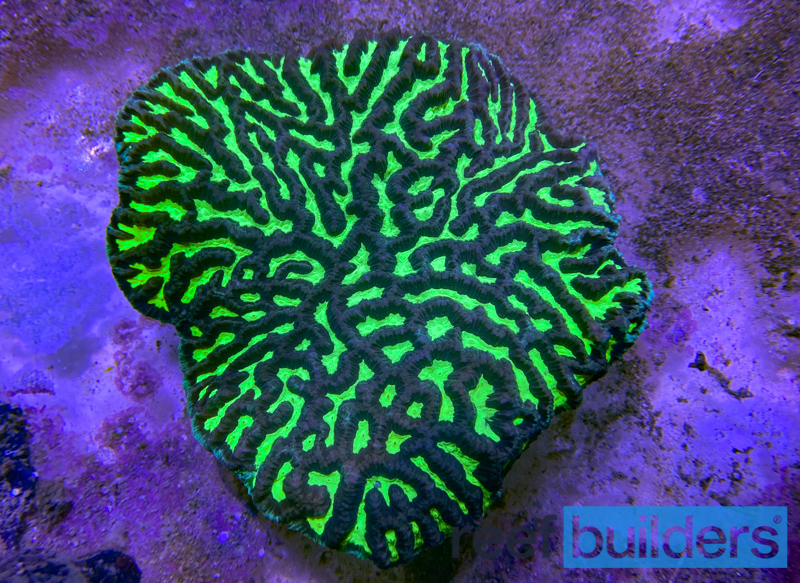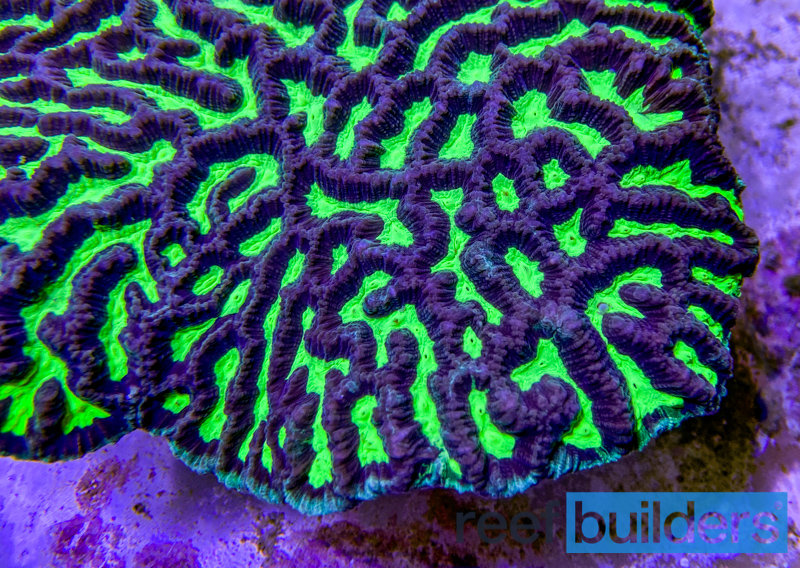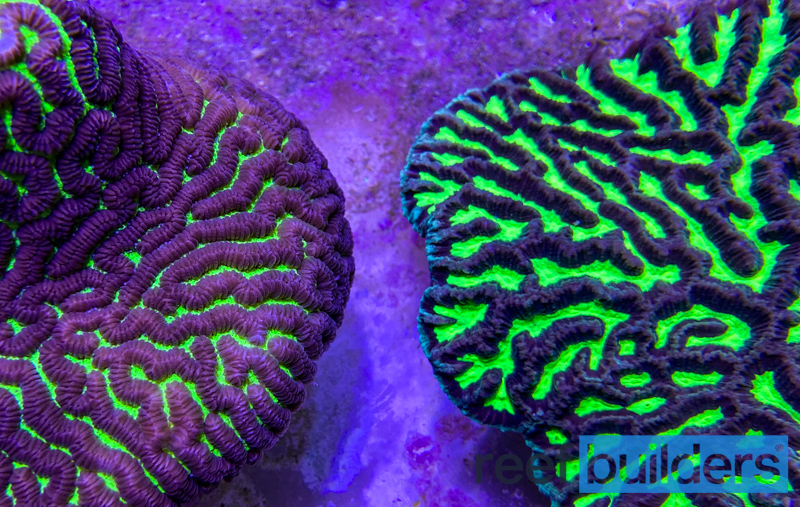Despite what they are being called, most maze brain corals in the reef aquarium hobby are not actually Platygyra at all, but a different and distinctive species called Paragoniastrea australiensis or Paragon coral for short. The reasons for the misidentification are too numerous to enumerate in this write up but the end result of blanket labelling any maze brain coral as a ‘Platygyra’ is that we lose sight or even the notion that Platygyra is actually a very unique coral in its own right.

False ‘platygyra’ aka Paragon brain corals are much more massive with very deep valleys to the corallites which tends to grow in a mound shape over time when left to actually grow into an appreciable colony. By comparison most Platygyra certainly have a preference for encrusting forms but that doesn’t preclude the more than ten species to grow into shapes with more ‘character’ in the wild, but in aquariums they are want to grow encrusting or even as flat plates.

Without a doubt the Paragon brain can occur in many more colors and combinations and while both Paragons and true Platygyra can be brown with green corallite valleys, the classic ‘maze’ appearance with dark ridges and fluorescent polyps is much more pronounced and attractive in a nice colony of actual Platygyra. True Platies also have much more jagged ridges and oral disc valleys with a meandering outline compared to the more uniform features of Paragon brain corals. Cosmetic differences and personal preferences aside, the biggest reason to learn whether you have a true or false Platygyra is because Paragon corals are wickedly much more aggressive, sending out copious and abundant sweeper tentacles at night that will light up any nearby corals.

There is a broad sentiment that over the last few years the reef aquarium hobby has been way too focused on frags and ‘collecting’ little bits of genetic samples. However now that thousands of reefers have their little pieces of Platis and Paragons, hopefully we’ll see a lot more of these corals growing into the beautiful, mature colonies we know they can become, making them much more recognizable and identifiable than the pieces of live rubble they started as.



